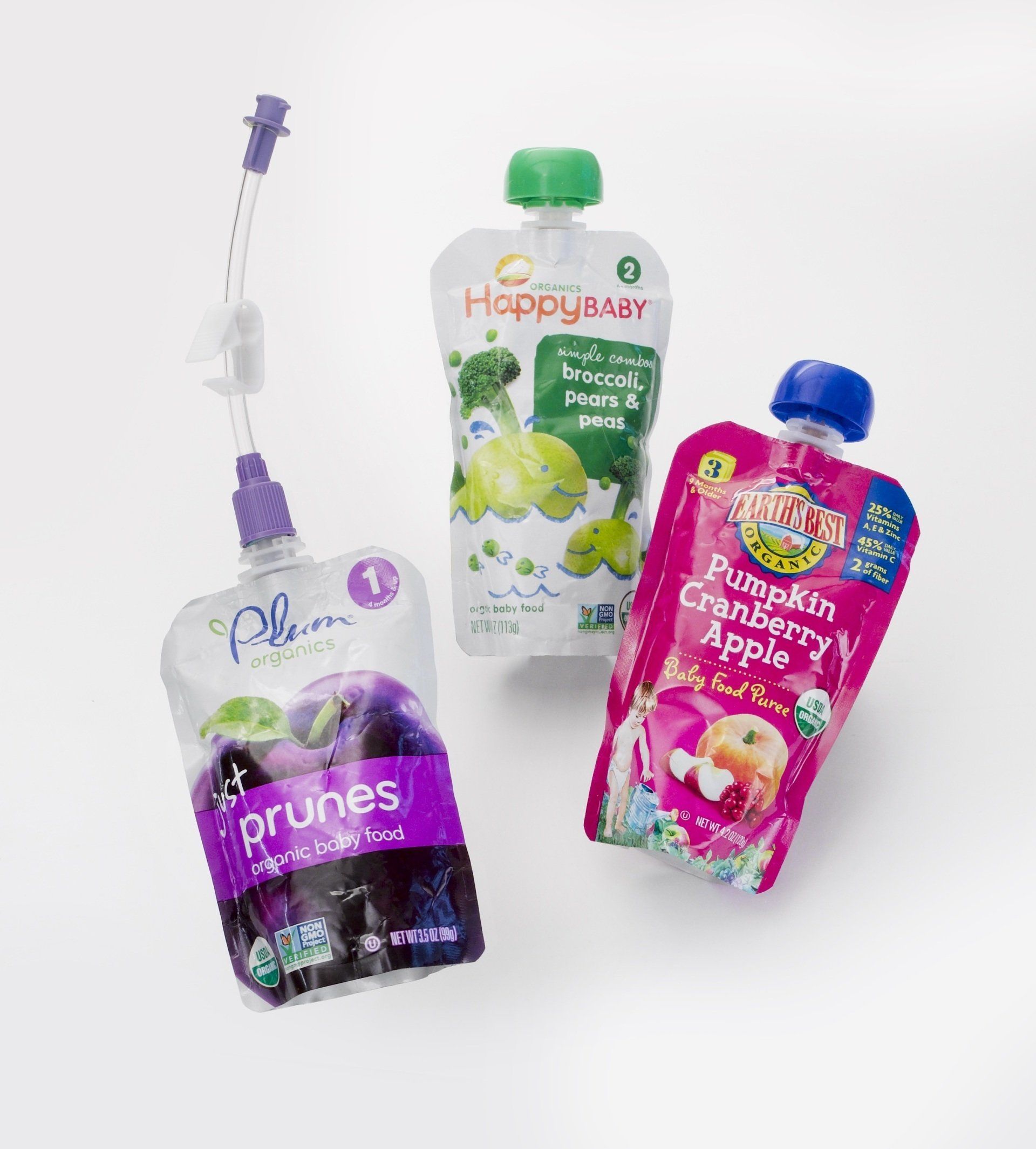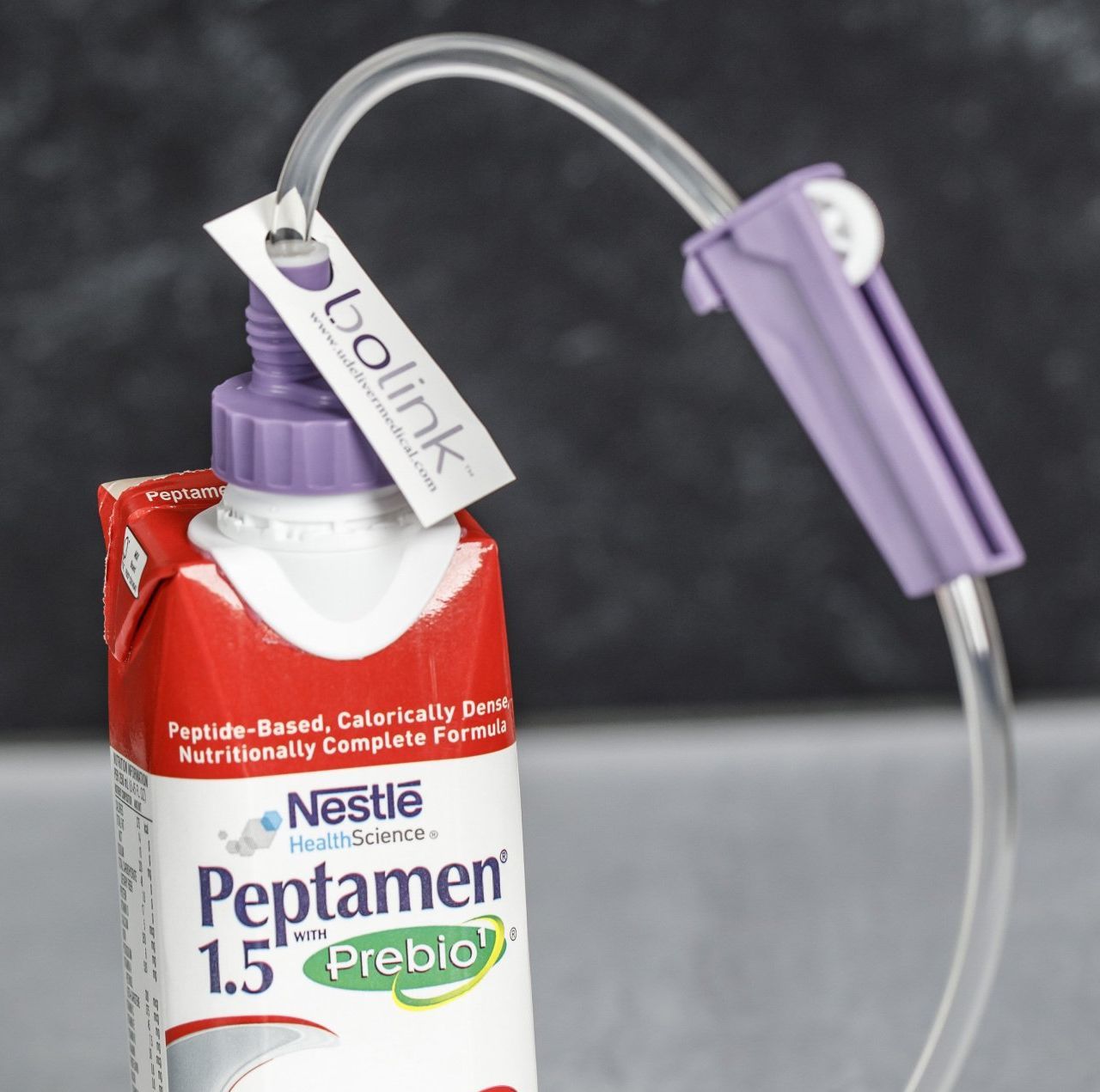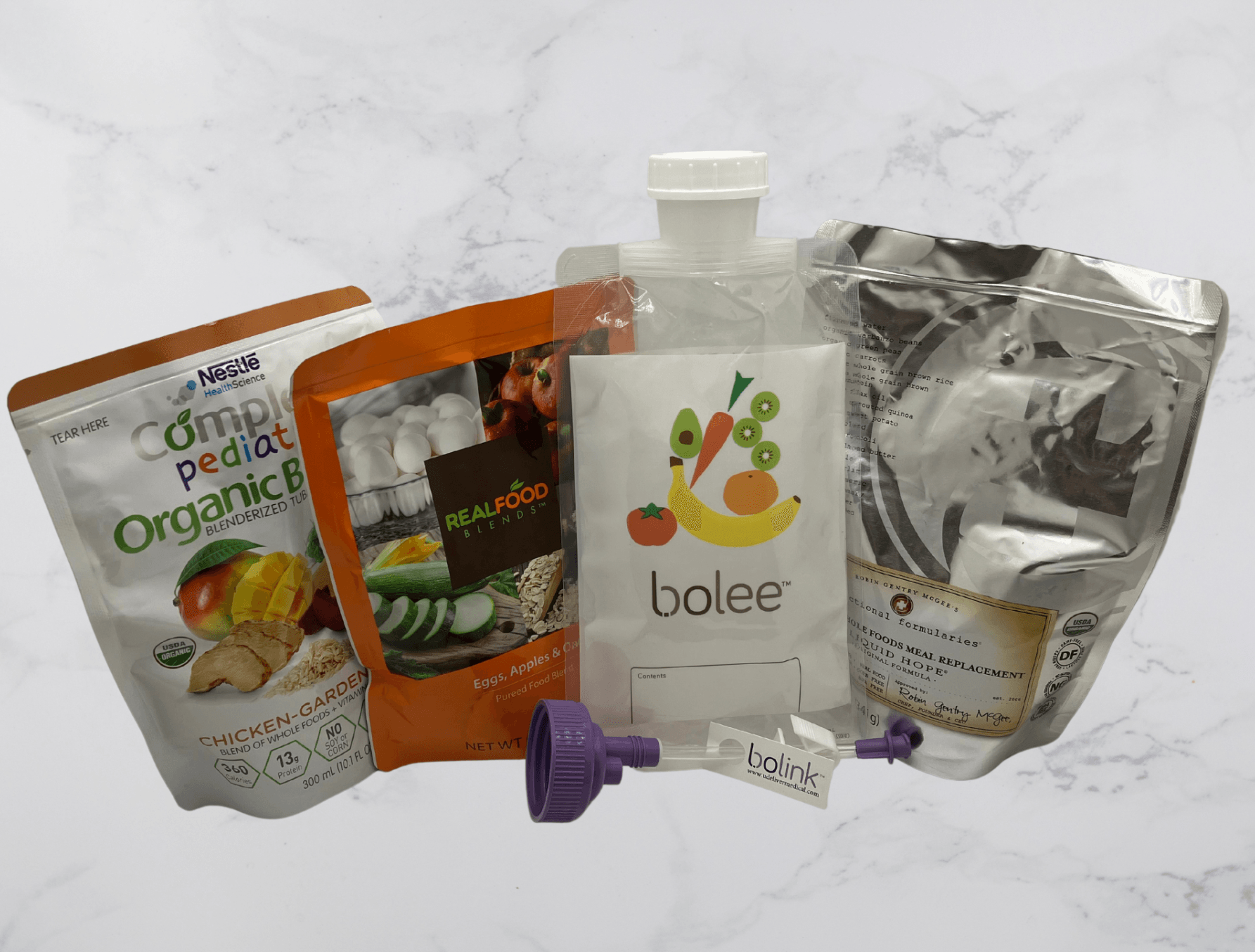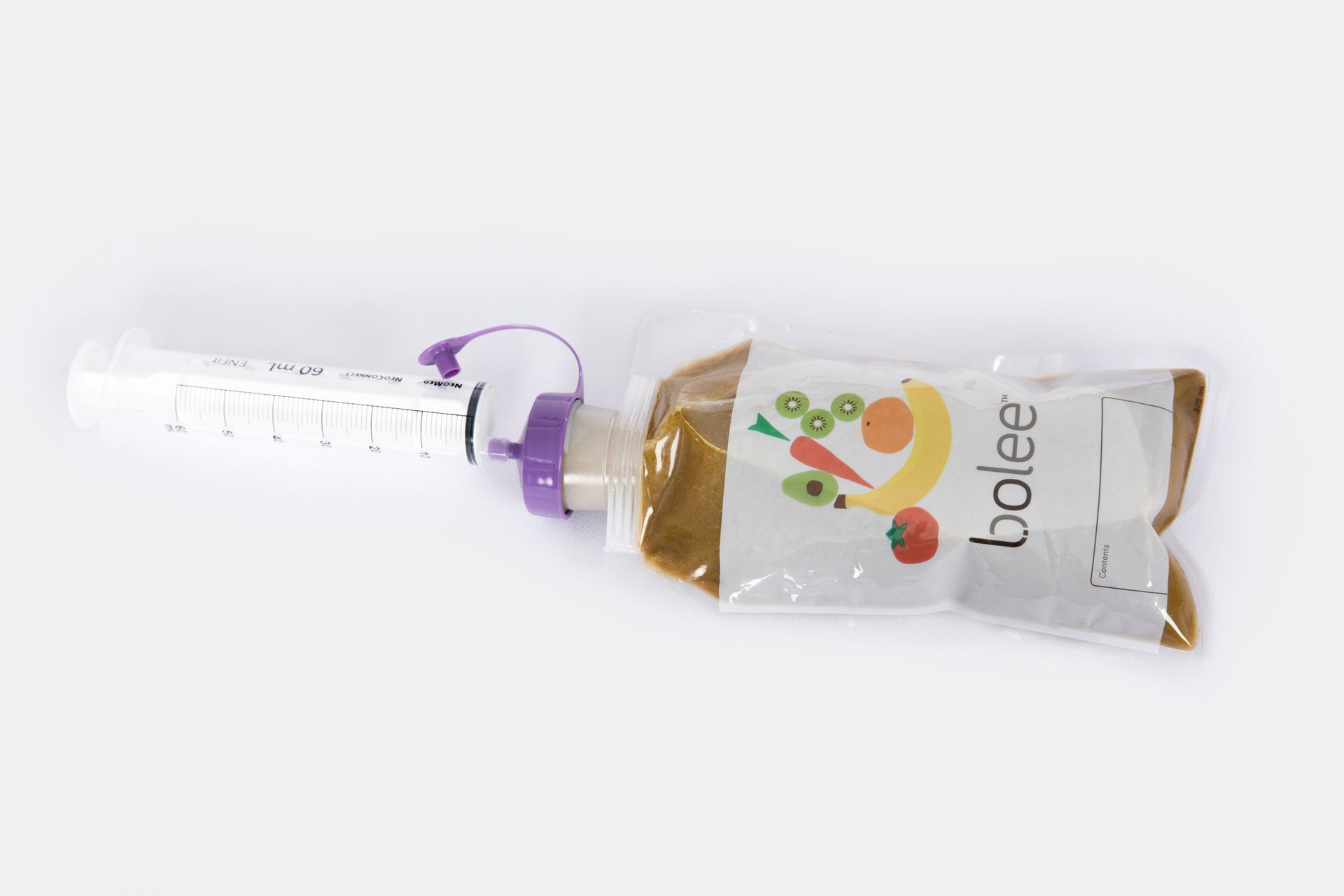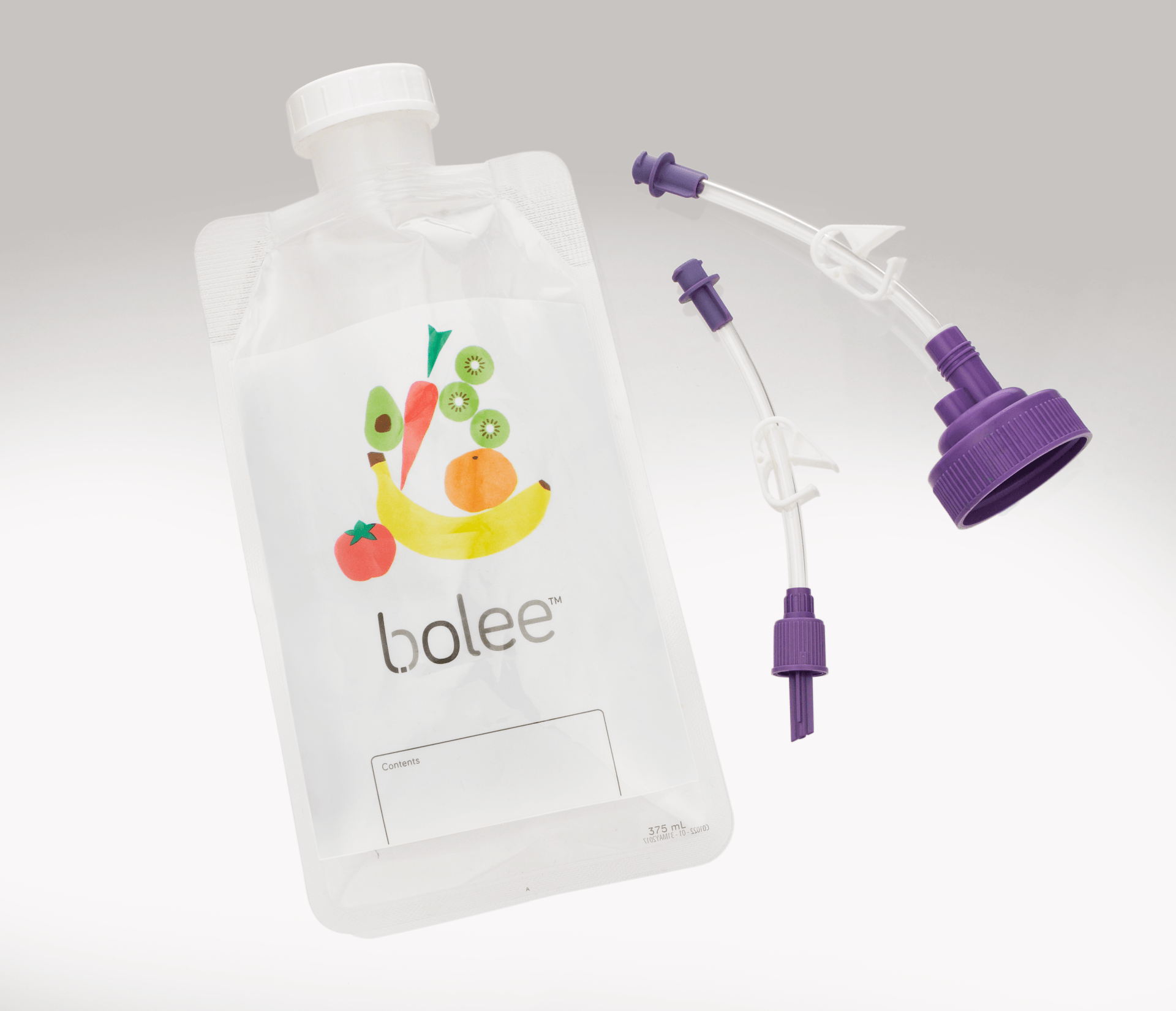Learning More About Blenderized Tube Feeding
At the recent Wisconsin Society for Parenteral and Enteral Nutrition (WISPEN) fall symposium, Lisa Epp, RDN, LD, CNSC gave a great presentation on blenderized tube feeding (BTF) practices. Lisa is a national expert on BTF an Assistant Professor of Nutrition at the Mayo Clinic and the home enteral nutrition coordinator for Mayo Clinic’s Home Enteral Nutrition Program. Under her leadership they have embraced BTF in their practice. She did a fantastic job of passing on their expertise in the presentation and breakout sessions.
There’s a lot of Blending going on!
Based on numerous studies and reports, using commercial and homemade BTF is getting more common. In one large 1,519 person online survey done in 2015, 23.6% of pediatric ( under age 18) respondents and 14.9% of adult respondents used BTF for some, if not all of their nutrition. Many people used a combination of commercial formulas and BTF.
The respondent’s primary reasons for using BTF are that it is more natural, makes me feel more “normal”. Most felt physically better and had less reflux or vomiting with more regular bowel movements.
Of the people that didn’t use BTF, the reasons given were it is a major time commitment, they didn’t know it was possible or had no support from their provider to start blending.
Putting BTF into Practice – Best Practices
-Blender type and time matter. High end blenders like Vitamix and Blendtec require less blending time and will last longer. Less powerful blenders require longer blending time and can quickly wear out.
-Hang time (time un-refrigerated) for homemade BTF is 2 hours.
-The bFed system with the Bolee
system with the Bolee Bag and Bolink
Bag and Bolink Large Cap works really well with BTF.
Large Cap works really well with BTF.
-Syringes are difficult to use but O-ring syringes work better than ones with gasket syringes, which tend to get sticky and difficult to use quickly.
-Pumps don’t handle BTF well and most pump manufacturers advise against it.
-Gravity sets must have large diameter tubing to handle BTF.
-ENFit® connectors require extra care to keep the feeding tube port free of residue. The best ways to do that is to keep the syringe tip clean and make as few connections and disconnection as possible.
-BTF can clog feeding tubes so check the tube to make sure it is still working. Interestingly, many blenders report clogs but find it easier to get rid of the clog than clogs from commercial tube feeding formulas.
Creating a BTF Nutrition Plan
Lisa had a number simple recommendations to consider when putting together a tube feeding plan with btf.
-Keep it simple.
– There are a lot of online resources available but work with a dietitian to develop a food plan and standard recipes.
– Use “ My Plate ” template to convert family meals to balanced, healthy BTF.
-It is OK to use commercial formulas as a base to develop your BTF recipes and ensure that nutritional needs are met.
-Use new commercial whole food tube feeding products (
Functional Formularies ,
Real Food Blends ) when convenience is needed or to give yourself a break from the work.
-Multi vitamins aren’t always necessary so consult with a dietitian to be find out if you really need one.
-Monitor weight and make corrections for any weight loss or gain. Studies and experience have found that sometimes it takes more calories to maintain weight with BTF, possibly because of the energy expended to digest BTF.
A Dietitian’s Perspective
To sum up, the biggest take away from the session is that Lisa urged the dietitians at WISPEN to be open to BTF, especially when a patient asks about it. It is important for patients to see their dietitian as a supportive partner. In her practice she uses patient questions about BTF as an opportunity to learn from patients, educate them on good nutrition and encourage active involvement in nutrition planning. She works with her patients to learn about the very creative ways they have developed to deliver the new nutrition, whether it is a homemade blend a new commercial whole food tube feeding.
How Does the bFed System fit into this new landscape?
The bFed System can deliver all nutrition from standard and whole food commercial formula to homemade BTF. The bFed System makes it possible to go from 6 syringes of nutrition at every meal to one Bolee
System can deliver all nutrition from standard and whole food commercial formula to homemade BTF. The bFed System makes it possible to go from 6 syringes of nutrition at every meal to one Bolee Bag and Bolink
Bag and Bolink Large Cap. No more dipping a syringe tip into a container to fill it. That means no more messy syringe tips which is especially important when it comes to keeping the ENFit connectors clean.
Large Cap. No more dipping a syringe tip into a container to fill it. That means no more messy syringe tips which is especially important when it comes to keeping the ENFit connectors clean.
The Mayo Clinic (and many other clinics and home care suppliers) see the benefits of the bFed System. It has Bolee Bags, Bolink Large Cap and Small Cap as a recommended delivery systems in its home enteral nutrition orders.
Make sure to ask your care team and home care supplier for the bFed System!
Click here to see the latest list of home care suppliers supporting the bFed System.
The post Learning More About Blenderized Tube Feeding appeared first on bFed System.



